Electronic Waste Management Strategies and Recommendations
VerifiedAdded on 2023/06/04
|14
|1210
|330
Report
AI Summary
This report delves into the critical issue of electronic waste management, highlighting its rapid growth and encompassing all discarded electronic products. It identifies the harmful components within e-waste like lead and cadmium that pose significant risks to human health and the environment. The report proposes solutions such as electronic recycling, waste reduction, and product reuse to mitigate these risks. Focusing on Sydney, Australia, the report emphasizes the need for partnerships, public awareness campaigns, and the promotion of recycling to effectively manage e-waste. It recommends long-term waste management policies, pragmatic approaches, a focus on reduction over disposal, and the strategic use of social media to implement effective e-waste management plans. The report concludes by underscoring the importance of a sustainable approach to e-waste management, and the effective reuse of electronic products.
1 out of 14

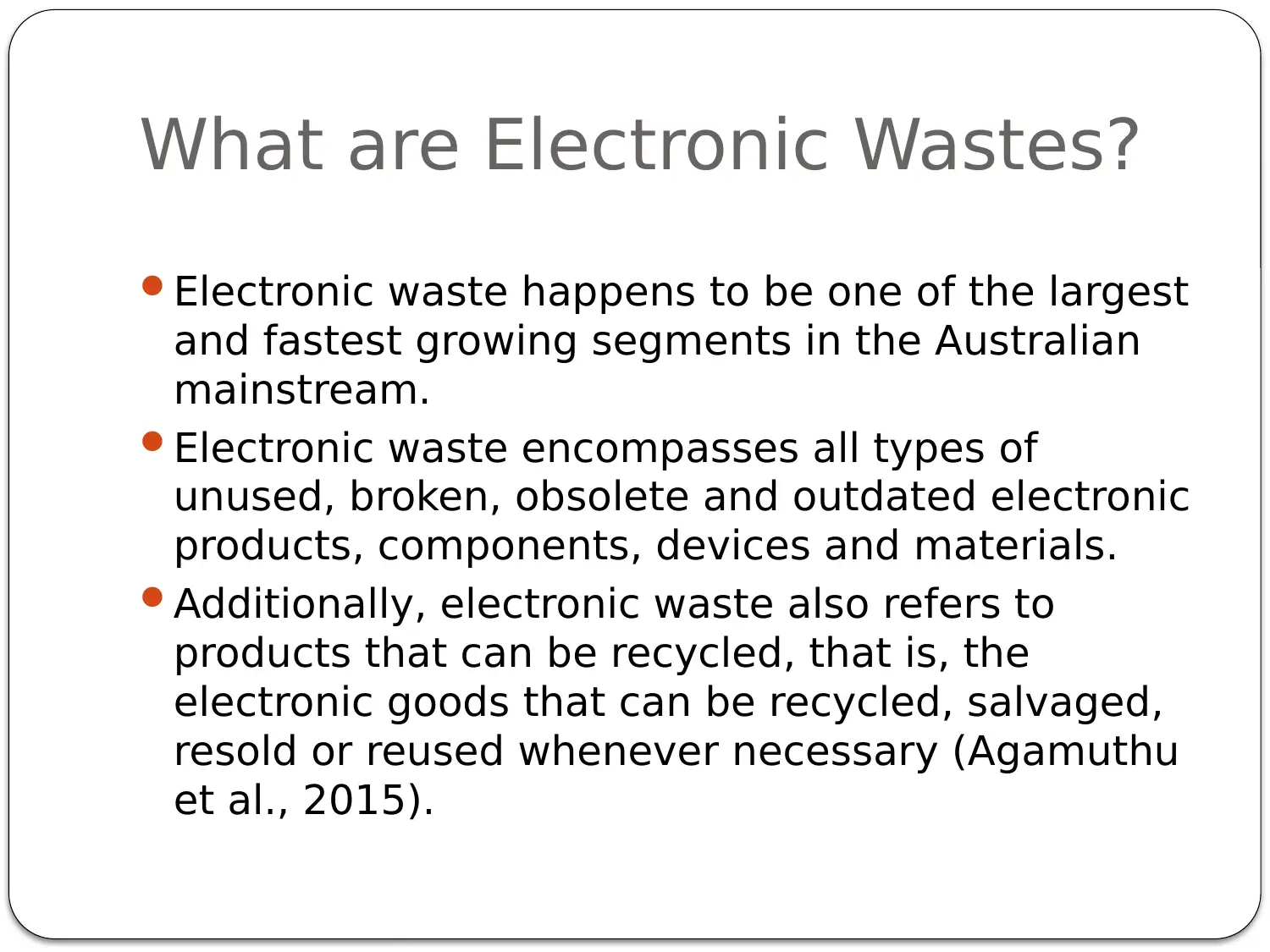
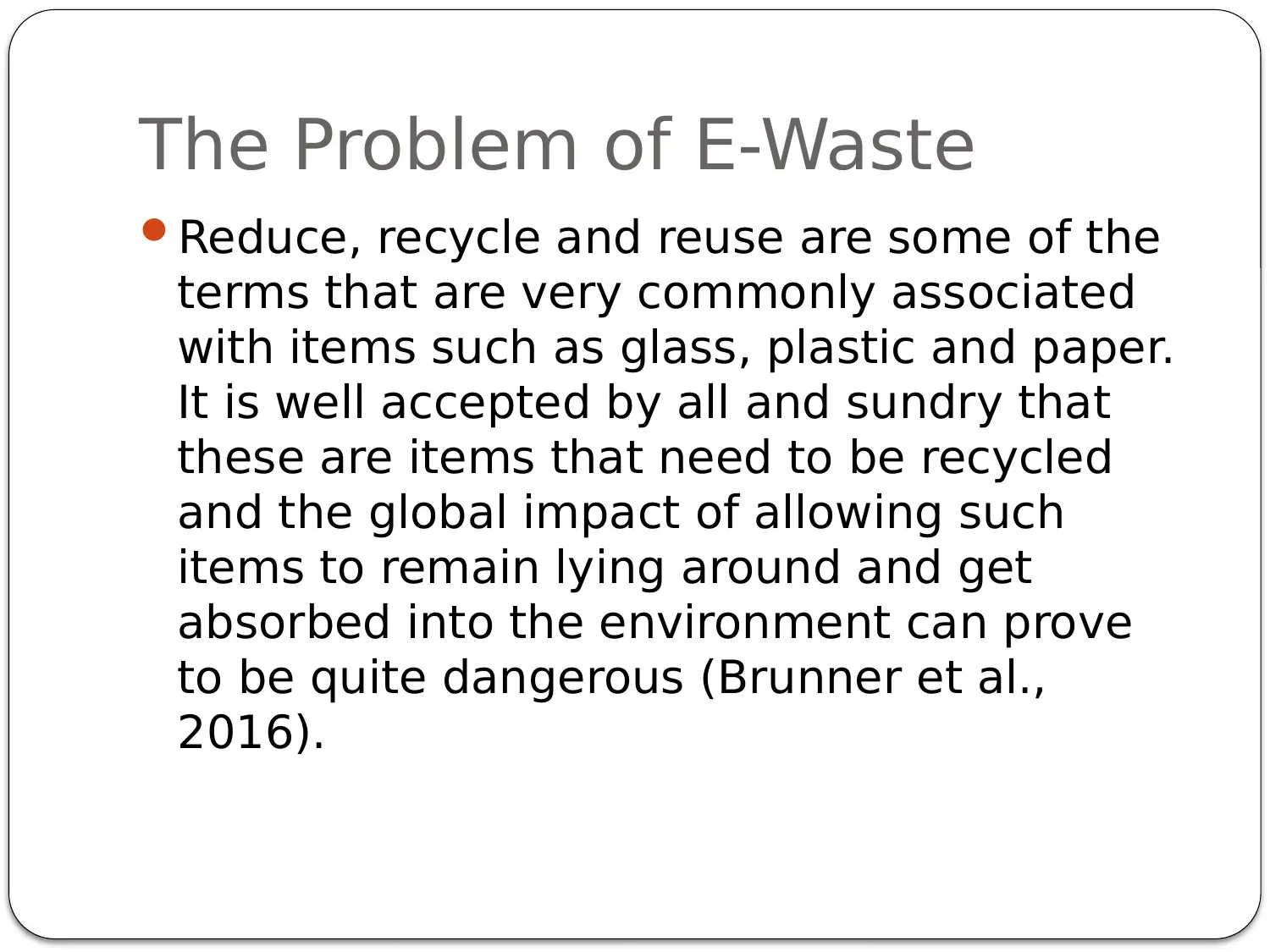
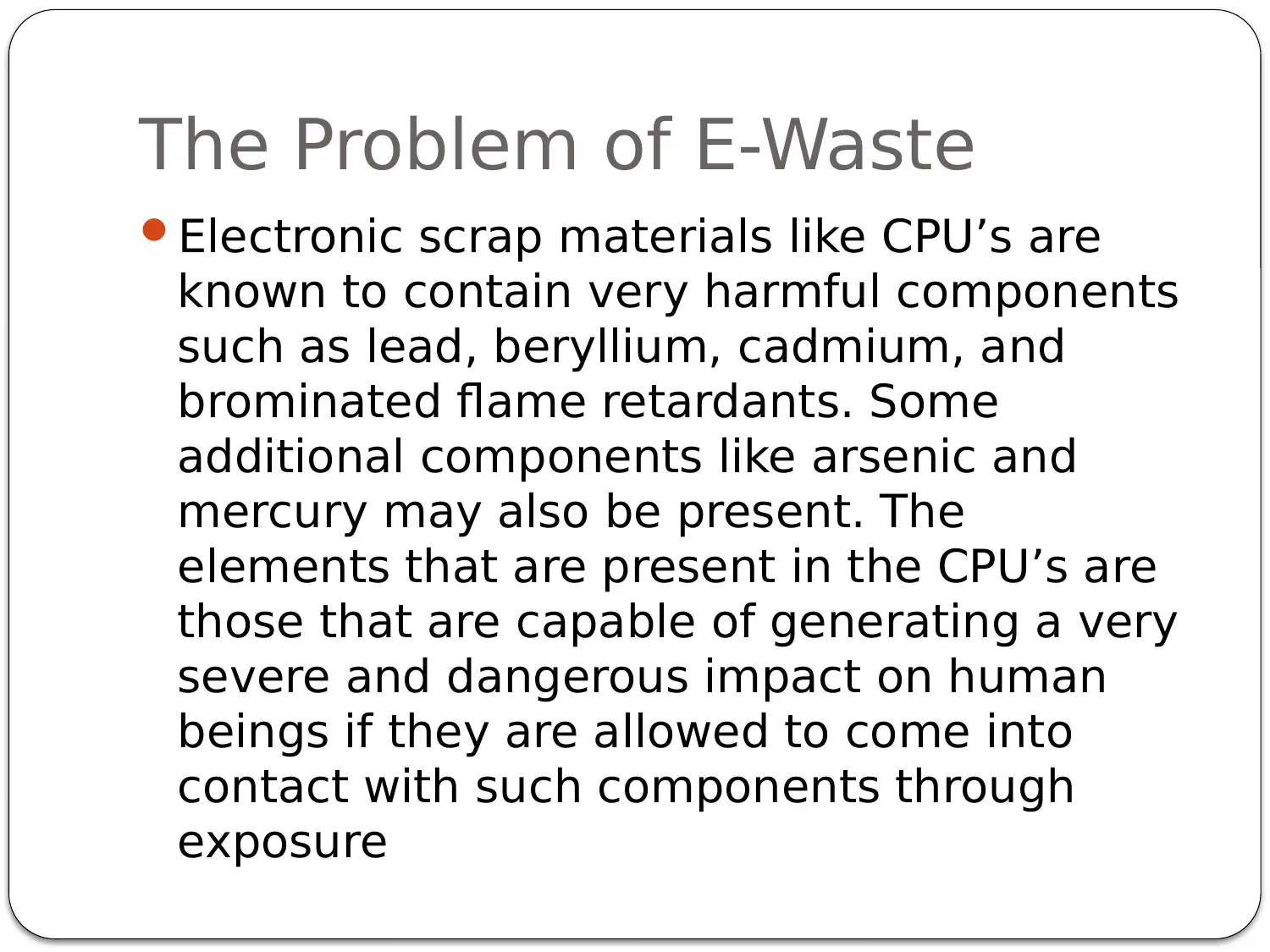
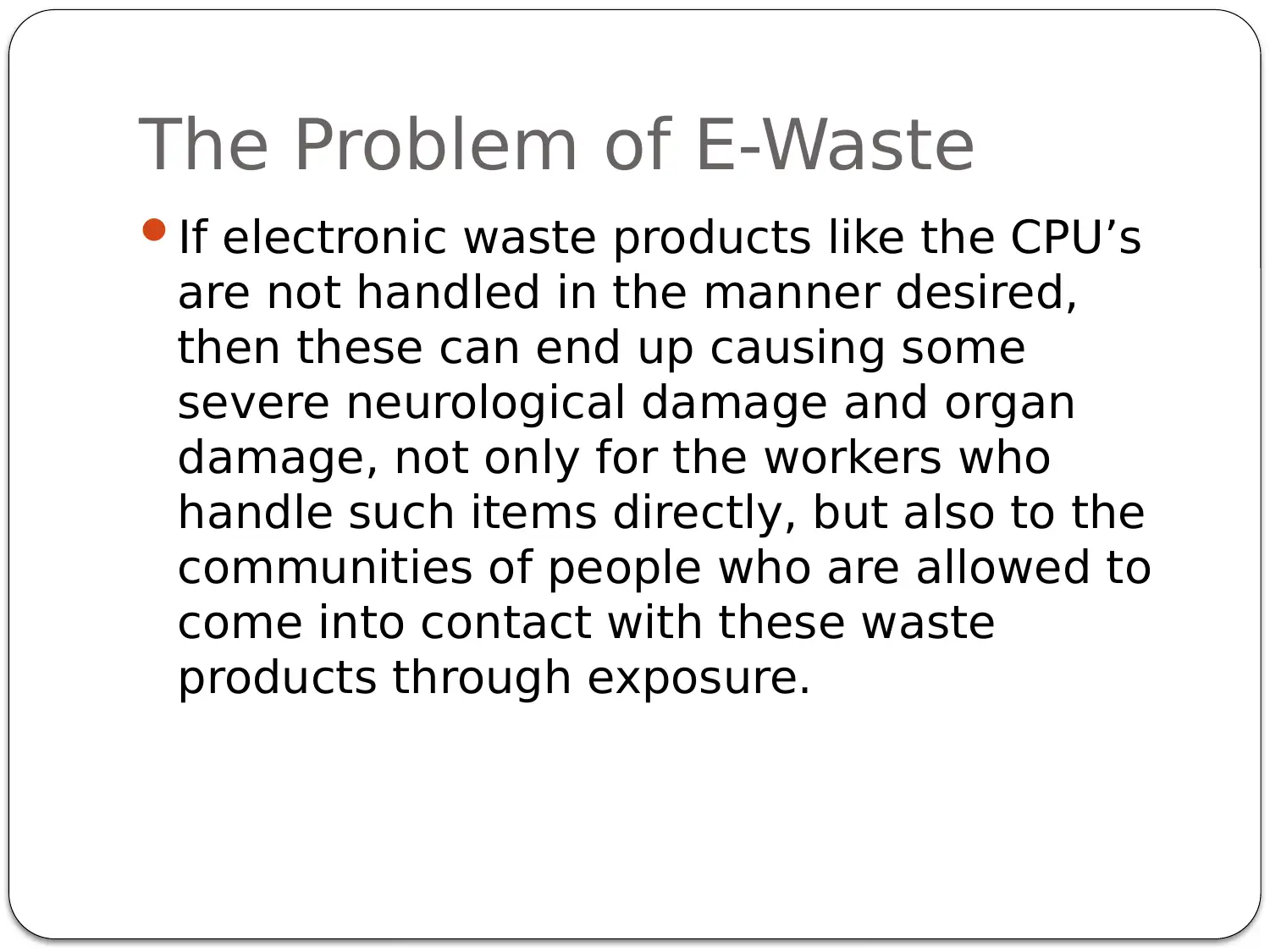
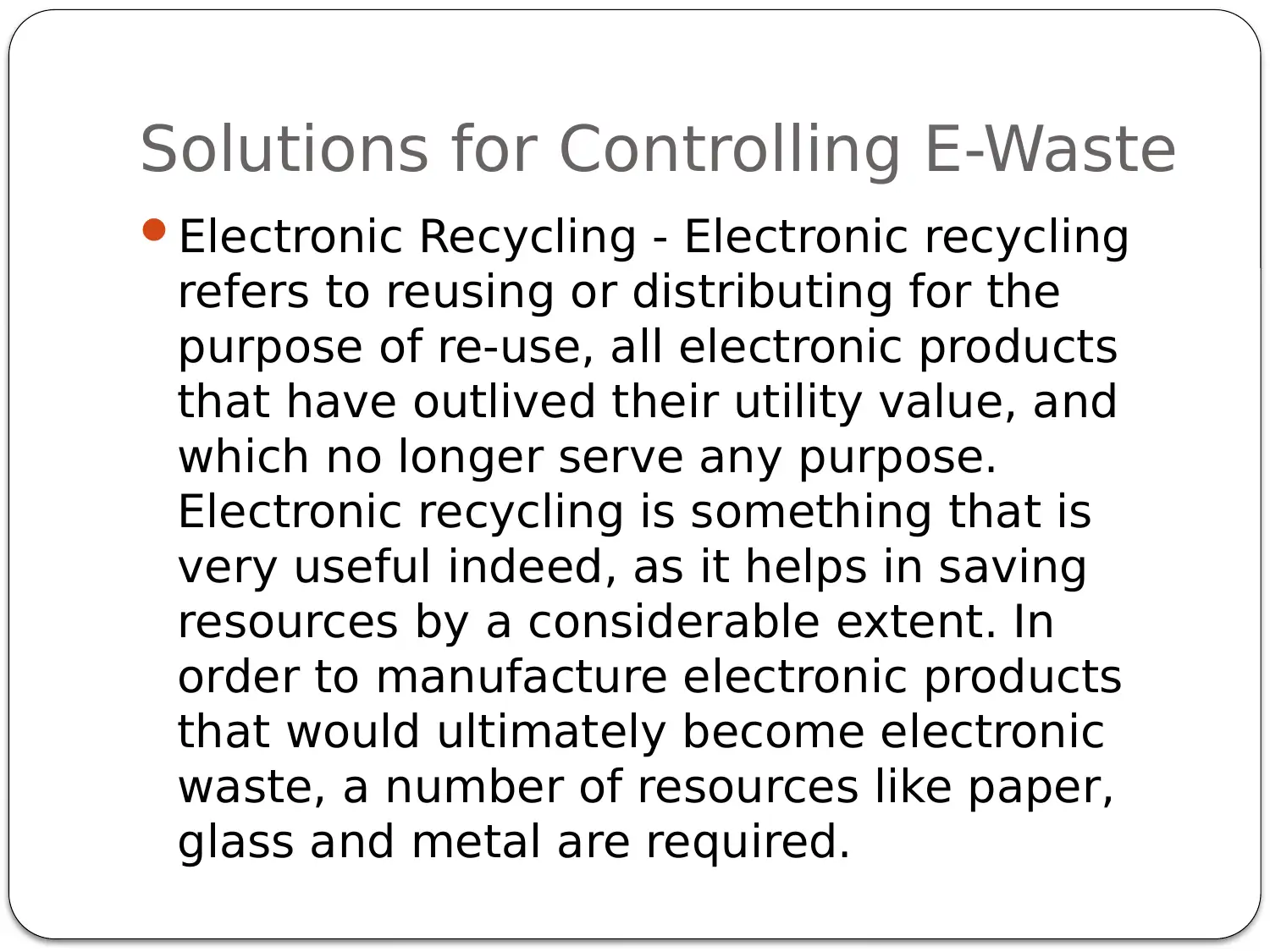
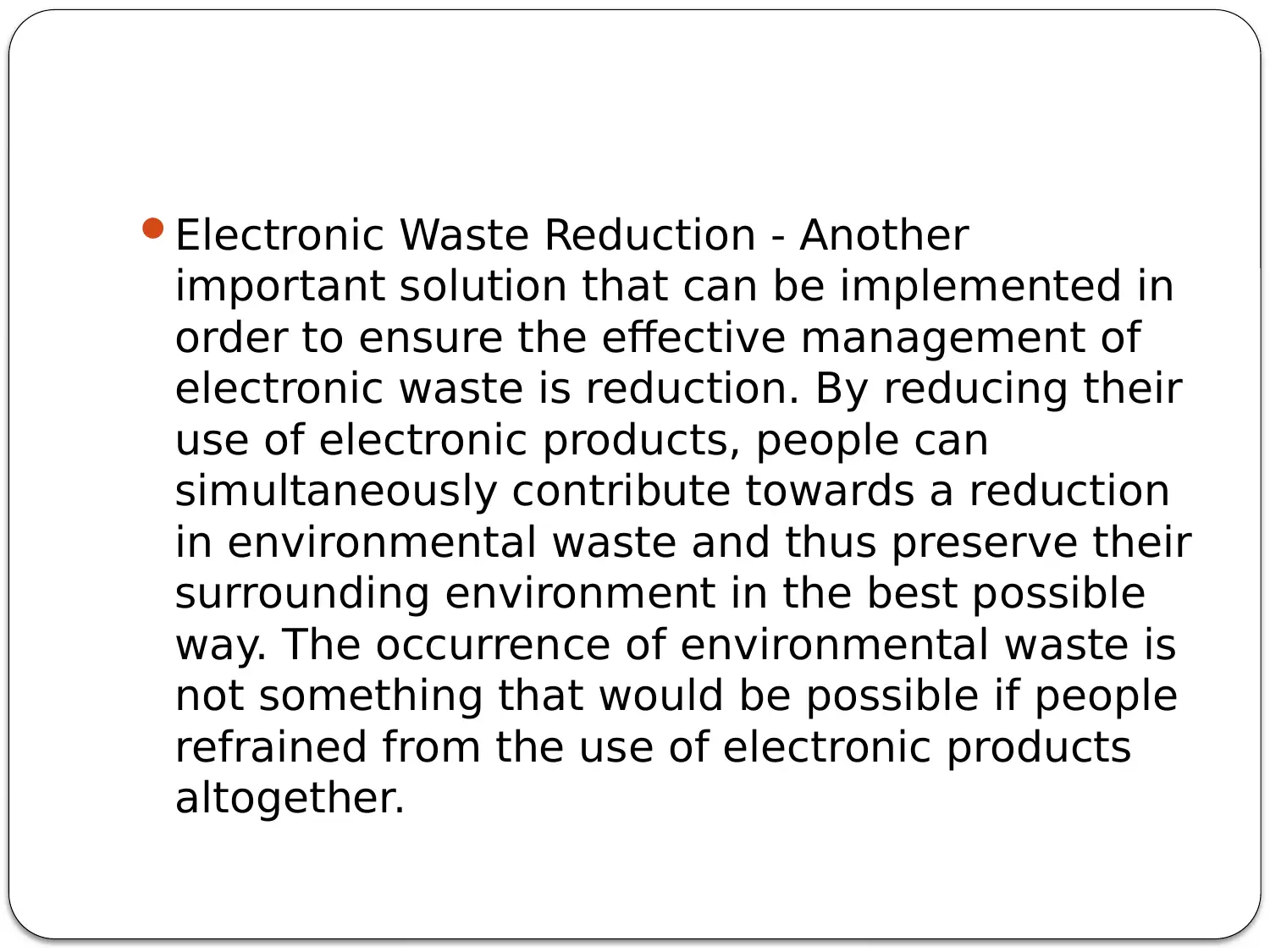
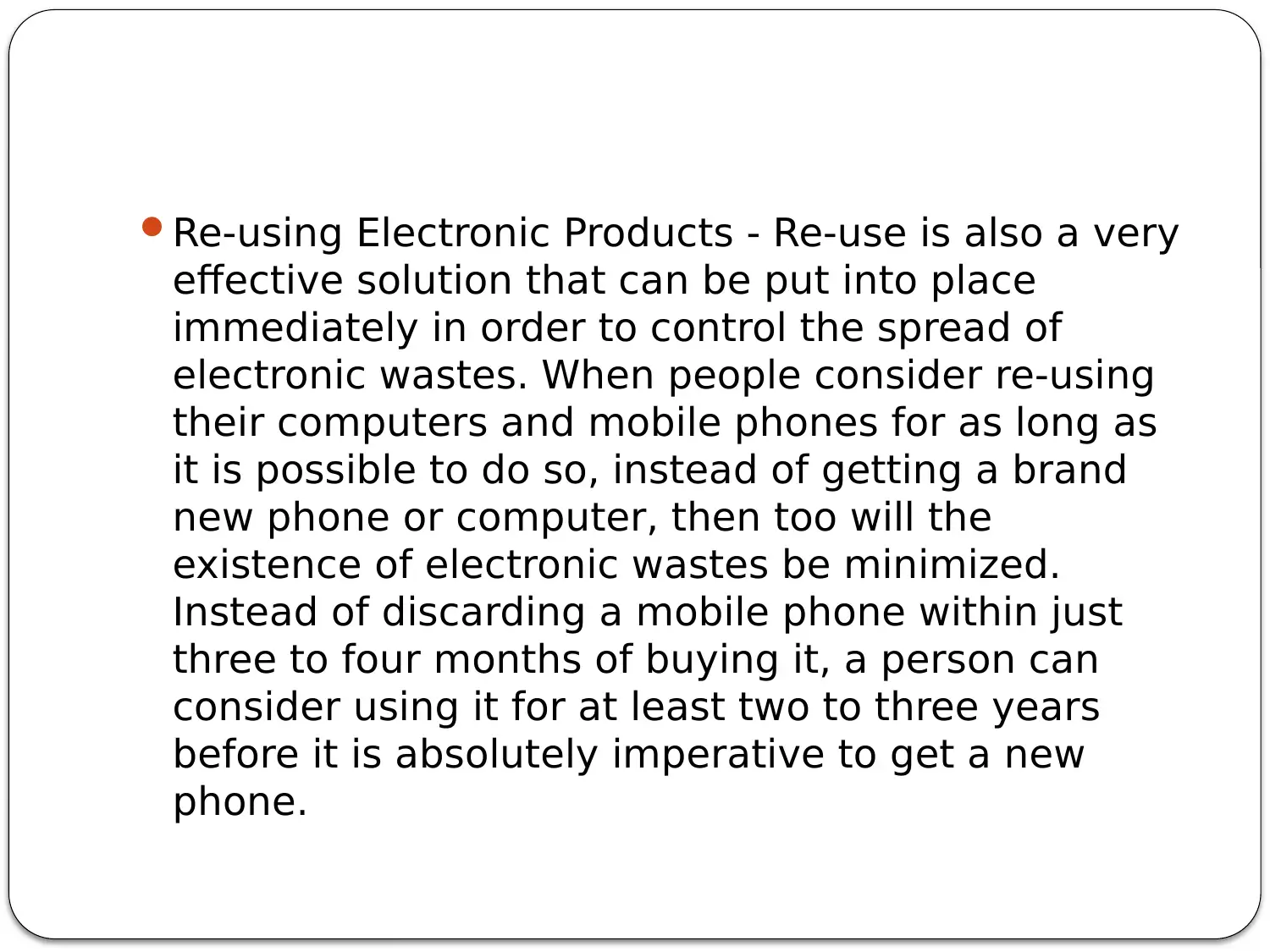
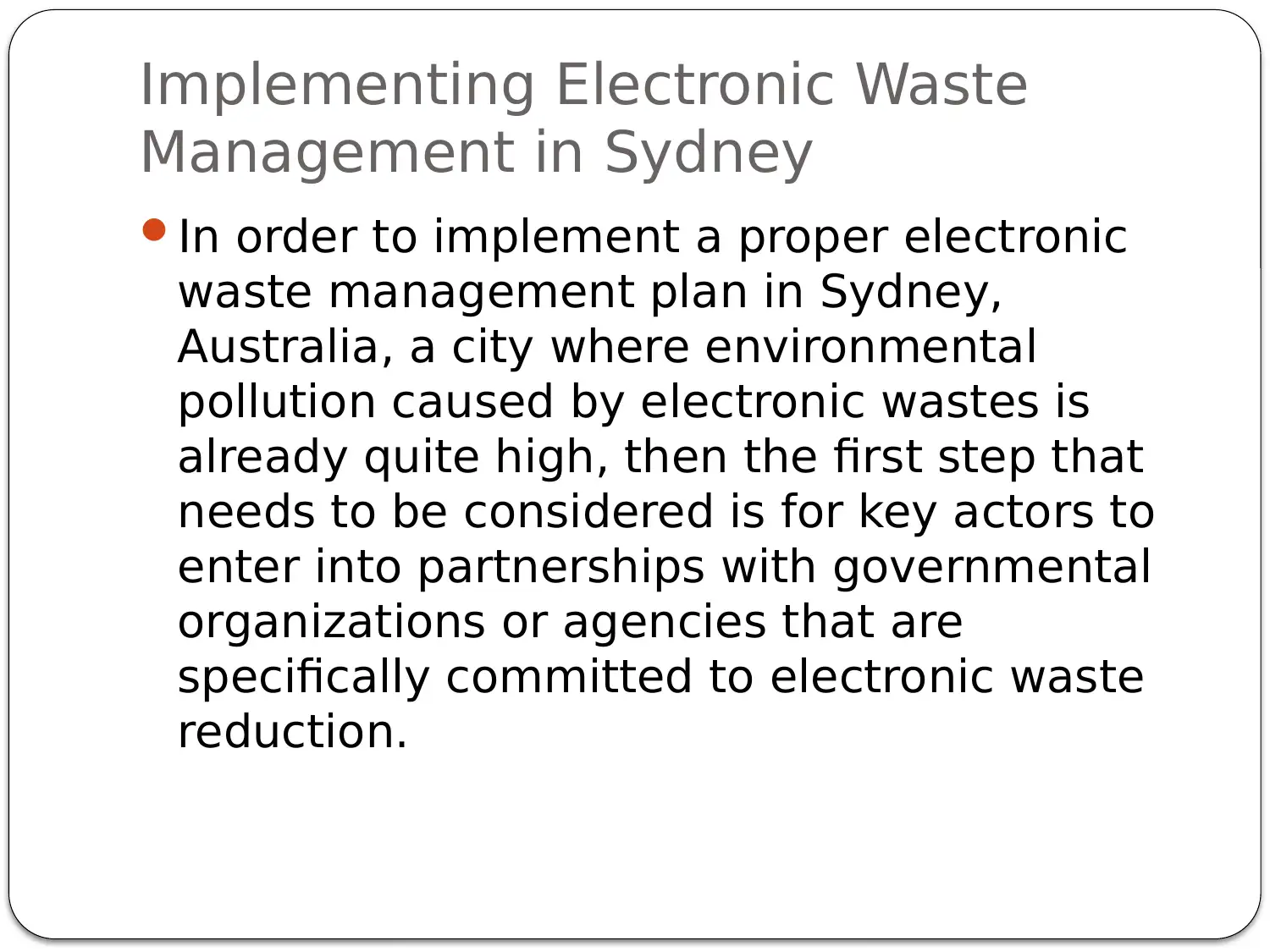

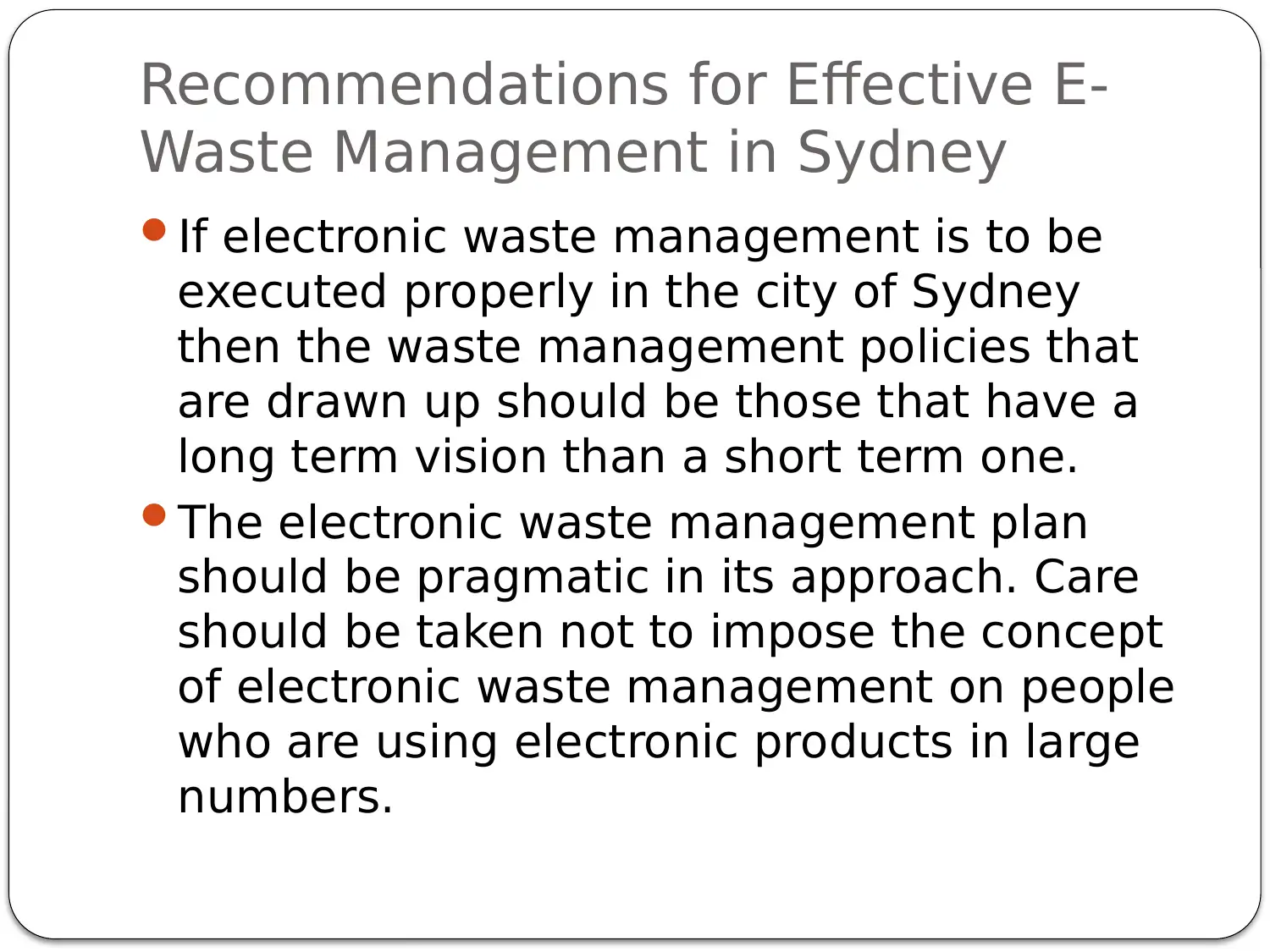
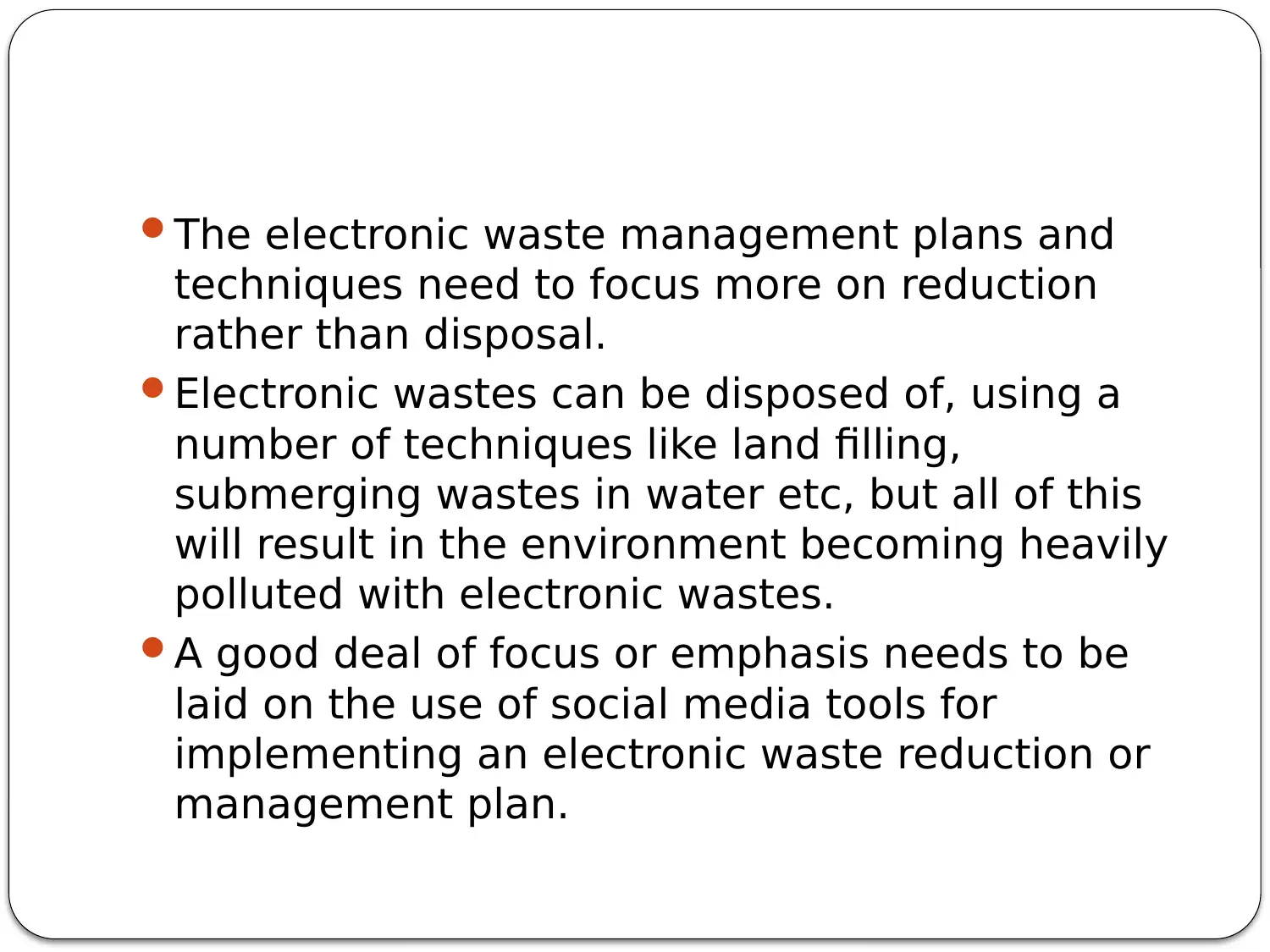
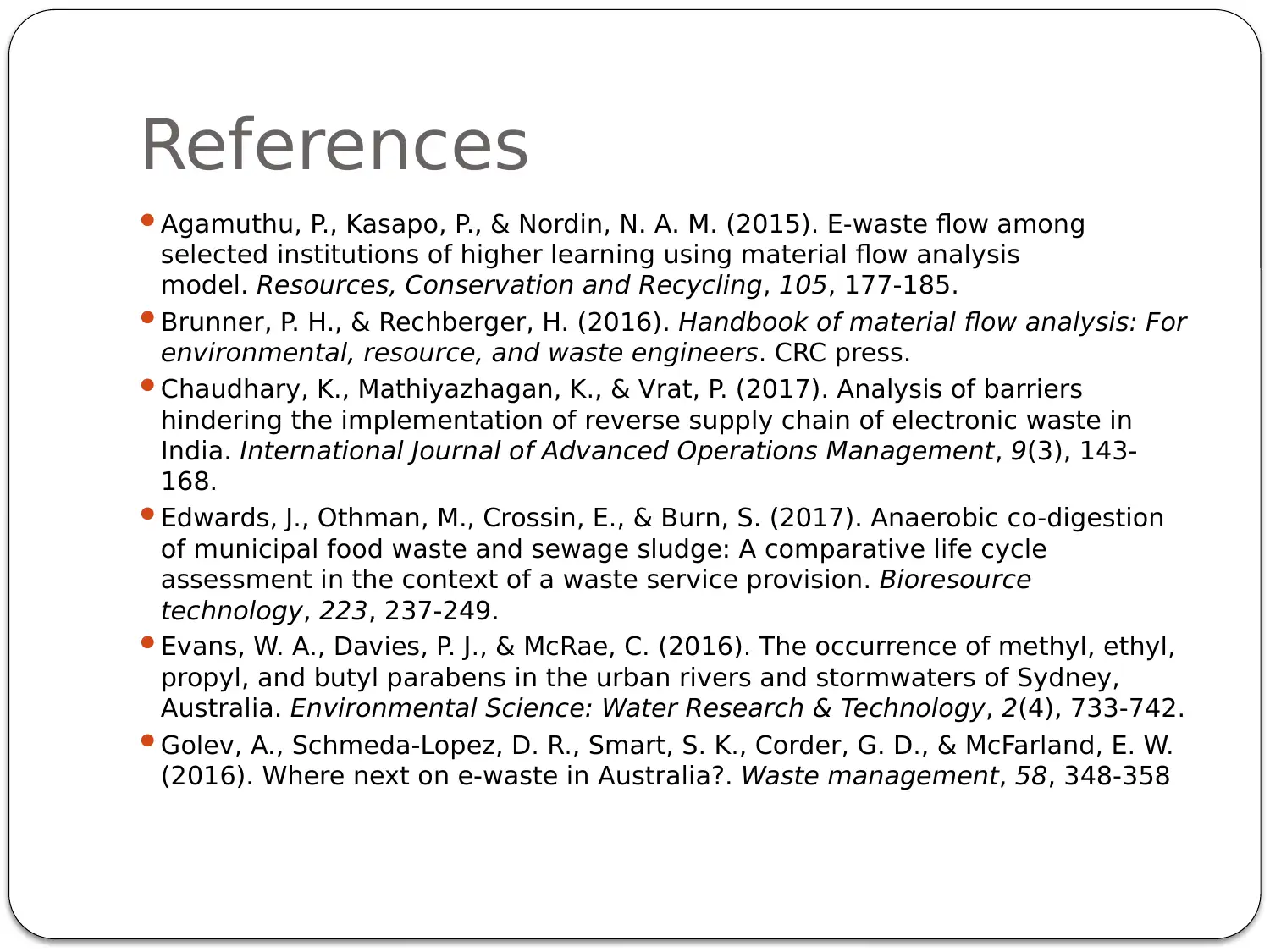






![[object Object]](/_next/static/media/star-bottom.7253800d.svg)